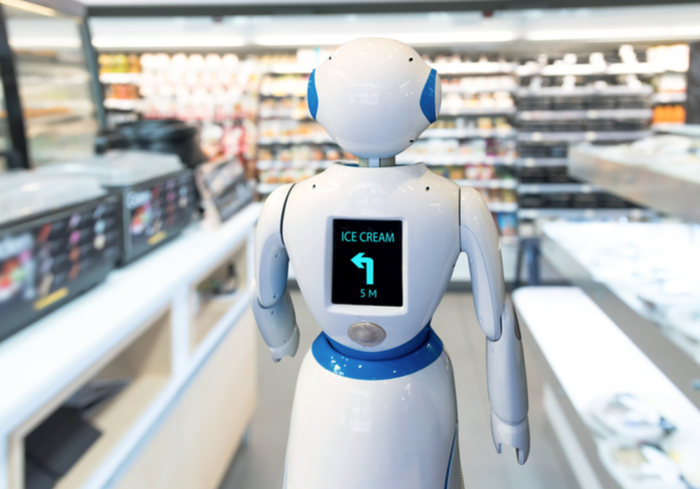
An experimental run of a robot designed to assist shoppers in a European supermarket was cut short after it frustrated customers, according to Monday (Jan. 22) reports by U.K. news source Mirror Online.
The robot, named “Fabio,” was put to work in the Edinburgh store of Scottish supermarket chain Margiotta as part of a BBC program to see if it could serve human shoppers. The device, developed by Heriot-Watt University, was tasked with helping to connect with customers through jokes and directions to items within the store.
“We thought a robot was a great addition to show the customers that we are always wanting to do something new and exciting,” said Elena Margiotta, who runs the supermarket chain with her father and sister.
It turns out the innovation wasn’t meant to be. It became apparent through the trial that Fabio wasn’t going to replace human employees in the store and, after a week of testing, he was let go.
The robot simply couldn’t direct shoppers. If a customer were to ask Fabio where the beer was, it would respond, “It’s in the alcohol section.” The device also struggled to filter ambient noise in the store.
While Fabio wasn’t particularly effective, machines like it may replace workers. Financial services firm Cornerstone Capital Group projected robots will capture between 6 and 7.5 million jobs over the next 10 years, slashing the 16 million-strong retail workforce by approximately 38 percent. Cashiers will probably be the earliest to replace, but will, by no means, be the only casualties.
It appears the retail robot revolution is already starting, too. A robot named Tally trawls the aisles of St. Louis grocery stores Schnuck Markets to check for items that need restocking, repricing due to error or reshelving due to messy placement. The real-time information helps associates do their jobs more easily and efficiently without replacing humans completely.
Tally, the world’s first autonomous shelf-auditing and analytics robot, answers the insecurities of the 70 percent of retailers who rated themselves “average” or “below average” in terms of inventory management.